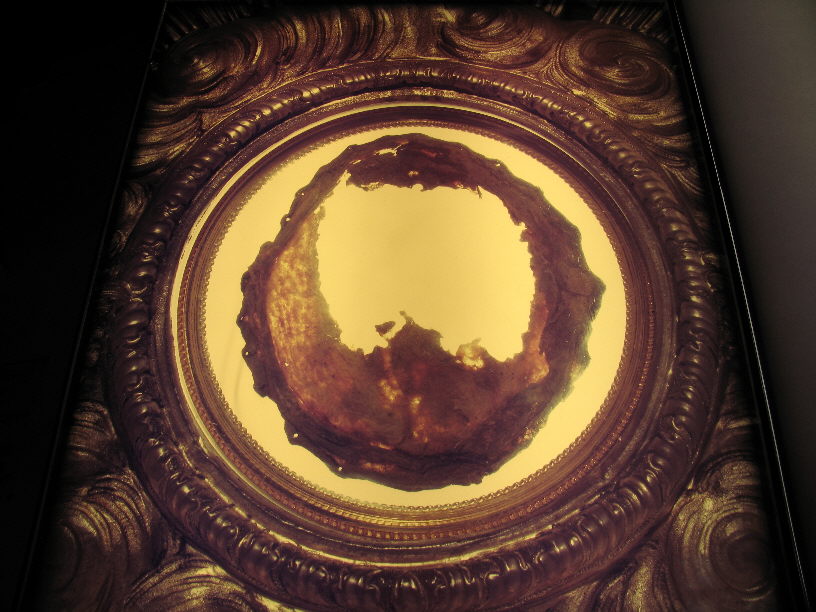The most extraordinary miracle of the Catholic Church. Scientific analyzes
Of all the Eucharistic miracles, that of Lanciano (Abruzzo), which took place around 700, is the oldest and most documented. The only one of its kind to have been authenticated without reservation by the scientific community (including the commission of the World Health Organization), following rigorous and accurate laboratory analyzes.
The story.
The prodigy in question happened in Lanciano (Abruzzo), in the small Church of Saints Legonziano and Domiziano between 730 and 750, during the celebration of the Holy Mass presided over by a Basilian monk. Immediately after the transubstantiation, he doubted that the Eucharistic species had really transformed into the flesh and blood of Christ, when, suddenly, under the eyes of the astonished friar and the entire assembly of the faithful, the particle and the wine changed into a piece of flesh and blood. The latter coagulated in a short time and took the form of five yellow-brown pebbles (on EdicolaWeb you can find a more detailed description).
Scientific analyzes.
After some summary analyzes carried out over the centuries, in 1970 the relics could be studied by an internationally renowned expert, Prof. Odoardo Linoli, professor in Pathological Anatomy and Histology and in Chemistry and Clinical Microscopy, as well as Primary Director of the Laboratory of Analysis Clinics and Pathological Anatomy of the Hospital of Arezzo. Linoli, assisted by Prof. Bertelli of the University of Siena, after the proper sampling, on 18/9/70 he carried out the analyzes in the laboratory and made the results public on 4/3/71 in a report entitled "Histological research , immunological and biological tests on the Meat and Blood of the Eucharistic Miracle of Lanciano "(the conclusions can also be viewed on the encyclopedia Wikipedia1 and Wikipedia2. He established that:
The two samples taken from the meat-host were made up of non-parallel striated muscle fibers (such as skeletal muscle fibers). This and other indications certified that the examined element was, as the popular and religious tradition had always believed, a piece of "meat" made up of striated muscle tissue of the myocardium (the heart).
The samples taken from the blood clot consisted of fibrin. Thanks to various tests (Teichmann, Takayama and Stone & Burke) and chromatographic analyzes, the presence of hemoglobin was certified. The coagulated parts were therefore actually made up of coagulated blood.
Thanks to the immunohistochemical test of the Uhlenhuth Zonal Precipitation Reaction, it was established that both the myocardial fragment and the blood certainly belonged to the human species. The immunohaematological test of the reaction called "absorption-elution", instead established that both belonged to the blood group AB, the same found on the front and rear anatomical impressions of the body of the man of the Shroud.
The histological and chemical-physical analyzes of the samples taken from the relics did not reveal any presence of salts and preservative compounds, commonly used in antiquity for the mummification process. Furthermore, unlike mummified bodies, the myocardial fragment has been left in its natural state for centuries, exposed to strong temperature changes, to atmospheric and biochemical physical agents and, despite this, there is no hint of decomposition and the proteins of which the relics were established and have remained completely intact.
Prof. Linoli categorically excluded the possibility that the relics are a fake engineered in the past, as this would have presupposed the knowledge of human anatomical notions much more advanced than those widespread among the doctors of the time, which would have allowed to remove the heart of a corpse and to dissect it in order to obtain a perfectly homogeneous and continuous fragment of myocardial tissue. Furthermore, in the space of a very short period of time, it would necessarily have undergone a serious and visible alteration due to deliquescence or putrefaction.
In 1973 the Superior Council of the World Health Organization, WHO / UN appointed a scientific commission to verify the conclusions of the Italian doctor. The works lasted 15 months with a total of 500 exams. The searches were the same as those carried out by prof. Linoli, with other complements. The conclusion of all reactions and research confirmed what had already been declared and published in Italy.
